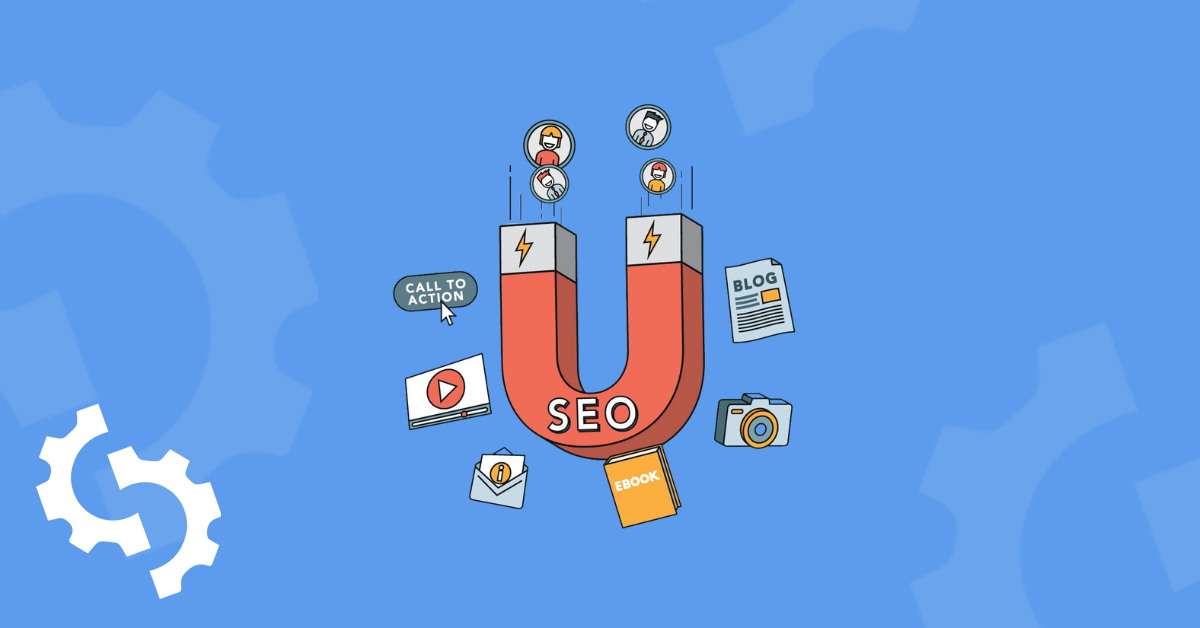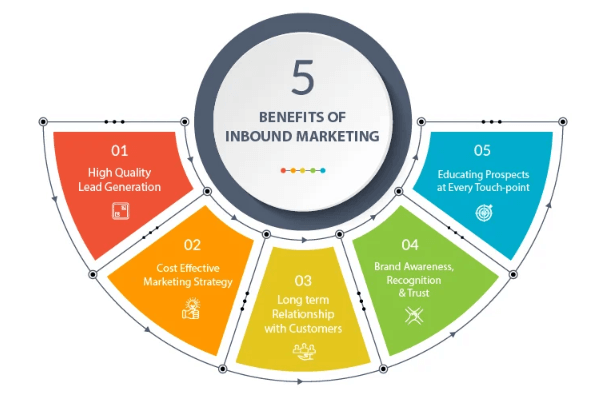
While classic ads only bring results when you invest, a well-planned inbound marketing strategy can attract clients even when you don't dedicate your time or money to it constantly. And that's not the only benefit.
Of course, that doesn't mean that inbound marketing is free. It can take a while until you develop the necessary skills and experience to be able to get this form of strategy right.
SEO, short for Search Engine Optimization, plays an essential role in effective inbound marketing. How can you implement SEO into your inbound marketing strategy, and what are the true benefits? Keep on reading to find out.
What is Inbound Marketing?
Inbound marketing works as a magnet for your clients. It's mainly about great quality content that helps people solve problems, and often that means giving value for free or in exchange for contact details. These are essential steps before attempting to sell anything.
Compare it with outbound marketing (a.k.a sales) where pitching the offer is immediate, whether the prospects expressed previous interest or not. With inbound marketing, you attract people that are already interested in a given topic and likely already deal with issues that your offer can solve.
Inbound marketing includes:
- blogging
- social media
- email lead generation
- SEO
- lead magnets
Inbound marketing is all about nurturing relationships. By giving out truly valuable information, people see you as an expert they can trust, which helps convince them to buy from you rather than anyone else.

Source: Seagull
According to Invesp, the average cost per lead drops 80% after five months of consistent inbound marketing. It’s a long-term game!
To sum it up, the main benefits of inbound marketing are:
- a continuous flow of new potential customers (website visitors, e-mail contacts, followers on social media),
- brand and authority building (creating helpful content or building valuable brand mentions),
- building and nurturing relationships (sending email drip campaigns or communicating on social media).
Relying solely on outbound techniques, you risk falling behind your competition, as your target audience has a relationship with them and sees them as an authority in the field.
What is SEO?
Search engine optimization (SEO) is about making your website attractive to search engines such as Google or Bing, so you rank higher and get organic (free) website traffic.
This is one of the most efficient inbound marketing strategies to put your content in front of your target audience.
Did you know that the click-through rate in the first position on Google’s SERP (search engine result page) is 39.6% – and in the fifth position, only 5.1%?
Without optimizing your content, you’re wasting your time and money.
How to Implement SEO in Your Inbound Marketing Strategy?
How do you implement SEO into the inbound marketing strategy?
Let's look at five ways that can help you maximize your chances of getting in front of people.
1. Have a Fast and Responsive Website
The quality of your website is crucial for ranking high, so make sure that it's both fast and responsive.
The longer a webpage takes to load, the more its bounce rate (the percentage of visitors that leave a webpage without taking action) will skyrocket. Google revealed that the chance of a bounce increases by 90% when a page load time goes from one to five seconds.
But why does it matter for SEO? Because a high bounce rate might indicate that users don't find the page useful so its rankings in the eyes of search engines will slip.
There are many reasons your website might be slow. A great first step is to take a speed test and see what recommendations you get.
Then, you also need to make sure that your website is optimized for different devices. When you hear that your website needs to be mobile-responsive, this is what it means.
The Google robots that analyze and evaluate your website care more about its mobile version than the desktop. That is because most searches on Google are done through mobile phones.

Source: Oberlo
2. Do Regular Keyword Research
Simply creating content around topics your audience is interested in is not enough. You need to know what questions they have in their heads and how they type them into the search bar when they look for a specific topic.
Therefore, you have to find a set of core keywords and only then create content around them. The best way to go about your keyword research is to first have a crystal clear understanding of your target audience. What are your ideal customers interested in? What problems do they have? What are they considering before buying products or services like yours?
To answer these questions, you may have to dive deeper into Google Analytics and Google Trends to do your own customer and market research. Based on this data, you can develop a set of keywords that will serve as a strong base for your content planning. Don't forget to update and optimize your keyword set regularly, as search trends are constantly changing.
3. Only High-Quality Content Allowed
Finding the right keywords is only part of the success: don't forget that you make content for humans. Stuffing it with keywords is not going to bring you any better results. Google can recognize it and penalize you for it. And let’s be honest, reading the same 2-3 words over and over again is not exactly a nice experience for the reader, either.
Keywords can help bring people to your site, but once they’re there, it’s up to the quality of your content to keep their attention and, ideally, convert them. Ensure you deliver the answers they were looking for; otherwise, your effort is useless. Every piece of content needs to be valuable, on-point, and high-quality.
That means not only relevant information going deeper into the topic but also quality text without mistakes and filler words, with relevant videos and images.
Keep visitors engaged by offering them related content or more profound know-how with downloadable files in exchange for their email addresses.
Often, high-quality and in-depth content can reduce the number of requests directed to the customer service team.
4. Come Up with Highly Optimized Titles
Structuring your articles is crucial for both search engines and readers. Make sure that you use your primary keywords in page titles.
The keywords should also appear in the following:
- introduction
- body text
- meta title and description
- URL
Titles are also essential to help clue readers in on what the whole article is saying. The results of NN Group's research showed that 79% of readers scan the page they came across first.
A long text without any structure can discourage people from reading, hence increasing the bounce rate. So be attentive when creating the titles, write short paragraphs (five to six lines are more than enough), mark important information in bold, and use bullet points when it makes sense.
5. Relevant Link-Building
According to Google, an important part of identifying whether a page is relevant and trustworthy is “understanding if other prominent websites link or refer to its content.”
You can see backlinks as votes of relevancy for your site. And the more relevant sites link to your content, the higher your chance to rank better in search engines.
Therefore it is essential to:
- create valuable content worth linking to
- have a link-building strategy to help bring in more backlinks

Source: Backlinko
Link-building definitely takes effort, but in the long run, it creates a huge advantage over your competitors.
Look for opportunities among high authority sites. You can start by offering testimonials to the software you use in exchange for putting a backlink to it, doing guest blogging, sharing your blog articles in forums or Facebook groups, or also making guest appearances on podcasts, or taking part in interviews.
Summary
Implementing SEO to your inbound marketing strategy will increase its efficiency. It's no secret that inbound marketing takes effort and time. However, people will find you much easier when you optimize your website and all the content you create.
Make sure that your website is fast and responsive, create well-structured, high-quality content based on keyword research, and work on acquiring backlinks from relevant sites. With this, you will build up your brand as an authority in the field and secure a continuous flow of new leads for your business.










